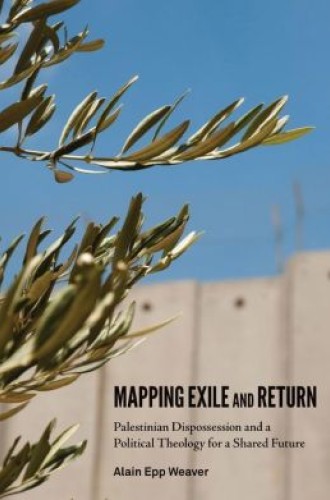Mapping Exile and Return, by Alain Epp Weaver
Every author who has written critically about the conflict between Israel and Palestine has confronted a fundamental cross-cultural problem, and Alain Epp Weaver is no exception. Israeli political ideology and social practices and the Israeli legal system are so far removed from the typical American’s experience that although the words of Israelis’ essays and books make sense to American readers, their meaning and impact are often beyond such readers’ grasp.
How is a reader to understand any author who writes about something that contradicts the reader’s experience, yet purports to describe the real world? In Israeli-controlled lands, for instance, heavily armed soldiers check a person’s national ID card to determine his or her religious and ethnic identity before allowing or forbidding the person to go home or to work or school. What would it mean to Americans if an armed soldier from China were to check their national ID in Chicago? The United States has no national ID, and certainly nothing that denotes one’s race and religion. Neither the National Guard nor China’s military is staffing checkpoints on neighborhood streets because there are no checkpoints. And a person of one particular religion or ethnicity is not entitled to more legal rights and privileges than a person of another religion or ethnicity. Even when accurately and sensitively described, the meanings of these experiences are simply beyond most Americans, except those who have visited Palestine and Israel.
Yet Epp Weaver refers to and presupposes the real, incongruent, and incomprehensible experiences of many persons in Israel and of everyone in Israeli-controlled Palestine. Many readers who enter this troubled territory through books like Mapping Exile and Return will just not get it; the chasm is simply too large between Western religious freedom, equal civil rights, and separation of church and state on the one hand and Israeli laws, mores, and practices on the other.






